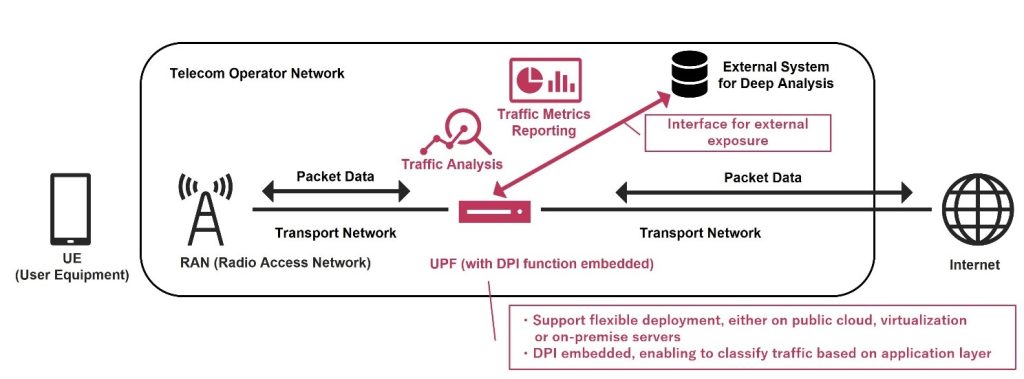NEC Corporation, a leading global IT and network transformation services provider, will launch a new User Plane Function (UPF) product for telecom operators that can be used to process user data traffic in 5G core networks. Offering an enhanced built-in Deep Packet Inspection (DPI, *1) function enabling visualization of communications quality and the collection of traffic data, an interface for external exposure that provides data to external systems (external analyzers) for deep analysis, and multi-platform compatibility, the new UPF will contribute to building the flexible, high-value-added networks for the Beyond 5G/6G era.
Read More: CIO Influence Interview with Steve Stone, Head of Rubrik Zero Lab
Background behind the introduction of the new UPF
In the Beyond 5G/6G era, the application of mobile networks will expand to Internet of Things (IOT, *2) devices, smart cities, and industries ranging from construction and civil engineering to manufacturing. Accordingly, service-level agreements (SLA, *3) will become more diversified, requiring low latency, high reliability, stable throughput, and more. Networks compliant with such a wide variety of SLA will require the flexibility to enable telecom operators to not only grasp communications quality in a timely and precise manner but also to properly reflect analysis results on the network side.
Keys to enhanced functionality
1. Real-time monitoring of communications quality and timely utilization of data
To maintain and improve communications quality and reliability, the new UPF facilitates real-time monitoring of communications quality and the acquisition of data that can be used for traffic analysis. Information such as the type of application utilized by the user, the volume of communications data for each application, the throughput experienced, and the number of packets discarded is necessary to fully comprehend and preserve communications quality. The enhancement of the built-in DPI function has made it possible to visualize and convert the data required for each application type used. As a result, telecom operators can analyze traffic trends and carry out real-time monitoring of communications quality for each application, thus contributing to higher customer satisfaction through swift responses to reports from corporate customers and users, the provision of new rate plans based on service trends, and more.
2. External device linkage for the realization of SLA-guaranteed mobile networks
The new UPF is equipped with an interface for providing a variety of data acquired by monitoring communications quality to external analyzers. By incorporating this interface, external analyzers can be used to quickly analyze the data required to improve network operations, including the detection of signs predicting poor connectivity due to degradation of communications quality and the autonomous preservation of user experience quality. Improvements in the accuracy of analyzers will accelerate the realization of SLA-guaranteed mobile networks.
Read More: NVIDIA’s Top 5 AI Solutions: Empowering CIOs for Data-Driven Leadership
3. The construction of flexible networks through multi-platform compatibility
In the Beyond 5G/6G era, it is anticipated that coverage will expand to all locations, including those not adequately covered by existing networks—namely, the sea, sky, and space. It is also believed that all things will be connected to networks. While up until now it has been commonplace for core networks to be installed and operated within the private data center of telecom operators, it is expected that there will be a need to utilize public clouds and install servers closer to customers to perform data processing as coverage expands. Based on open technology and infrastructure, this product enables packet processing independent of specific platforms, making it possible to flexibly respond to those needs. It not only gives telecom operators greater freedom in building their networks, but it also reduces deployment time, accelerates service delivery, and maximizes revenue.

*1) DPI is a technology for identifying the type of communication content by detailed analysis of traffic data packets flowing through a network.
*2) IoT is a technology that enables connecting everything in the real world to the Internet and achieves industrial efficiency, automation, and improved living convenience through data collection and transmission.
*3) SLA is an agreement signed between a service provider and a customer that sets the purpose and standards related to service quality and performance.
Latest CIO Influence News: Alteryx and Databricks Fast-Track AI for Enterprises with Deepened Integration
[To share your insights with us as part of editorial or sponsored content, please write to sghosh@martechseries.com]


